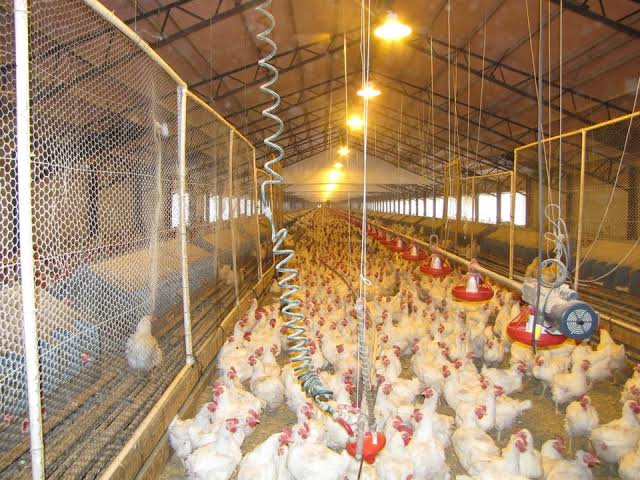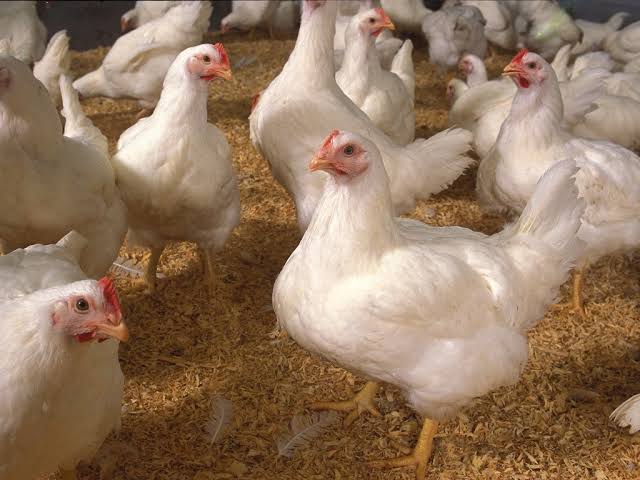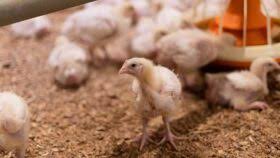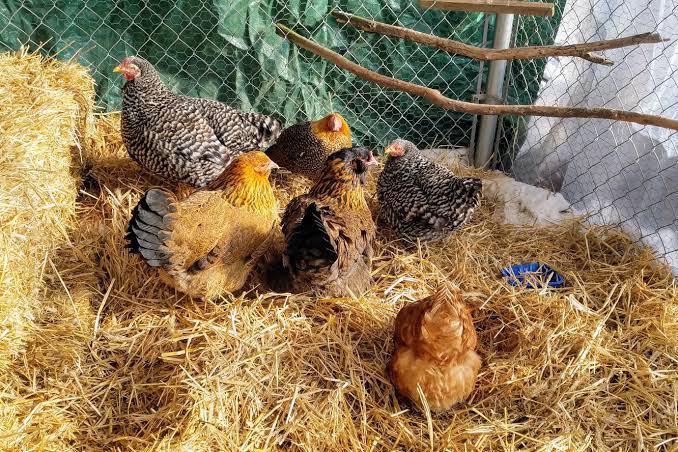Extreme coldness and hotness in a chicken house refer to significant deviations from the optimal temperature range necessary for the health and productivity of poultry. Understanding the implications of these temperature extremes is crucial for poultry farmers and enthusiasts alike.
When discussing extreme hotness, it is characterized by temperatures significantly above the recommended range of 65°F to 75°F (18°C to 24°C). In such conditions, chickens experience physiological stress that can impact their health and performance.
Chickens, being warm-blooded animals, maintain their body temperature through metabolic processes. However, when the external environment becomes excessively hot or cold, they struggle to regulate their internal temperature, which leads to several challenges.
Extreme hotness in the chicken house often occurs due to poor ventilation, overcrowding, or insufficient shade. In such conditions, chickens may resort to panting as a means of cooling down, leading to dehydration and electrolyte imbalances if they lack sufficient cool water.
This excessive heat also disrupts their feeding patterns, as chickens tend to eat less to avoid adding metabolic heat through digestion. Consequently, growth rates decline, egg production suffers, and overall health is compromised.
Extreme coldness in the chicken house can result from inadequate insulation, poor temperature control, or drafts. In cold environments, chickens need to expend more energy to stay warm, causing stress and increasing feed consumption to fuel metabolic heating.
This added energy requirement can strain their health and reduce productivity, as more energy is spent on warmth rather than growth or egg production. Vent pecking in commercial layer birds often arises from factors such as overcrowding, stress, or nutritional imbalances. When kept in close quarters, chickens may engage in aggressive behaviors like vent pecking due to frustration or stress.
Poor ventilation, sudden lighting changes, and lack of stimulation can worsen this behavior, while nutritional deficiencies, especially low protein or salt levels, may prompt aggression as birds seek essential nutrients. If unchecked, vent pecking can lead to injuries, infections, and increased mortality among the flock.
Additionally, prolonged exposure to high temperatures can lead to heat stress, which manifests as increased mortality rates, especially in young or older birds. The risk of heat stress is particularly concerning during the peak summer months when temperatures soar.
On the other hand, extreme coldness refers to temperatures that drop significantly below the ideal range, leading to a different set of challenges for poultry. Chickens are hardy creatures that can withstand colder temperatures to a degree, but when temperatures dip too low, they can suffer from hypothermia and frostbite.
Hypothermia occurs when a chicken’s body temperature falls below normal, impairing its bodily functions and potentially leading to death. Frostbite commonly affects the comb and wattles of chickens, which can be particularly damaging during harsh winter conditions.
In cold environments, chickens often exhibit behaviors to cope with low temperatures, such as huddling together to conserve heat. However, this can lead to overcrowding and increased competition for space, further stressing the flock.
Additionally, reduced movement in extremely cold conditions can hinder blood circulation and overall activity levels, affecting their health and productivity. Egg production often declines as well, as energy that would typically go towards reproduction is diverted to maintaining body heat.
Both extreme hotness and coldness create environments that can facilitate the spread of diseases among the flock. In hot conditions, chickens can become more susceptible to respiratory issues and infections due to stress and compromised immune responses. Cold temperatures can exacerbate the spread of certain diseases, as weakened birds are more likely to fall ill and spread infections within the flock.
Beyond health concerns, extreme temperatures can also impact the behavioral aspects of chickens. Under stressful conditions, they may exhibit signs of distress, including pecking, aggression, and changes in social dynamics. This can disrupt the overall harmony of the flock, making management more challenging.
The management of extreme hotness and coldness in a chicken house is not just about maintaining comfort; it is about ensuring the well-being and productivity of the birds. Farmers need to recognize that both ends of the temperature spectrum can lead to severe consequences for their flock.
Providing adequate shelter, access to clean water, and proper nutrition becomes crucial in helping chickens cope with temperature extremes. Understanding the implications of extreme hotness and coldness extends beyond animal welfare; it also has economic repercussions.
The cost of managing a flock during extreme weather can increase due to the need for additional heating or cooling systems, veterinary care, and potential losses in production. Consequently, poultry producers must consider the long-term sustainability of their operations while addressing the immediate challenges posed by fluctuating temperatures.
Read Also: Mushroom Growing Kits
Causes of Extreme Coldness and Hotness in a Chicken House

Maintaining the right temperature in a chicken house is essential for the health and productivity of poultry. Extreme coldness and hotness can adversely affect chickens, leading to stress, decreased egg production, and even mortality. Understanding the causes of these temperature extremes is crucial for poultry farmers to ensure the well-being of their flock.
1. Environmental Factors: One of the primary causes of extreme temperatures in a chicken house is environmental factors. During the winter months, outdoor temperatures can drop significantly, leading to a cold environment within the chicken house if it is not properly insulated.
Insufficient insulation allows cold air to seep in, creating drafts that can chill the birds. Conversely, during summer, high outdoor temperatures can raise the internal temperature of the chicken house, particularly if the structure lacks adequate ventilation.
Humidity also plays a critical role in temperature extremes. High humidity levels during hot weather can make it feel even hotter inside the chicken house. The presence of moisture in the air can impede the chickens’ ability to cool themselves through evaporation. On the other hand, low humidity levels in cold weather can exacerbate the chilling effect, leading to a perception of even lower temperatures.
2. Structural Design: The design of the chicken house significantly impacts temperature regulation. Poorly designed structures with inadequate ventilation systems can trap heat, causing extreme hotness inside. Without sufficient airflow, warm air accumulates, raising the internal temperature and leading to heat stress among the flock.
Similarly, the materials used in construction affect temperature control. Metal buildings, for example, can become excessively hot during the day and retain heat, while poorly insulated wooden structures can let in drafts and cold air during winter.
The orientation of the chicken house also matters; houses that face direct sunlight for most of the day can heat up quickly, while those positioned in shaded areas may remain cooler but can suffer from dampness and cold.
3. Bedding and Litter Management: Bedding materials can contribute to extreme coldness and hotness in a chicken house. In cold weather, proper bedding can provide insulation, helping to retain warmth.
However, if bedding becomes wet and soiled, it can lose its insulating properties, allowing cold to penetrate more easily. Conversely, in hot weather, thick bedding can trap heat and moisture, leading to uncomfortable conditions for the birds.
Regular litter management is essential to maintain optimal conditions. Failing to replace or turn bedding can lead to an accumulation of heat and moisture, creating a breeding ground for pathogens, which can further compromise the health of the chickens.
4. Flock Size and Density: The size and density of the flock also play a role in temperature regulation. A larger flock generates more body heat, which can help maintain a warmer environment during cold weather. However, overcrowding can lead to stress and competition for resources, which may negatively affect health and productivity.
In contrast, a small flock may not produce enough body heat to keep the house warm during winter, leading to extreme coldness. Proper space allocation is essential to ensure that birds have adequate room to move around without creating excess heat or cold.
5. Ventilation Issues: Proper ventilation is crucial in managing extreme coldness and hotness in a chicken house. Inadequate ventilation can lead to heat buildup during hot weather, as it prevents the escape of warm air. High humidity levels can exacerbate this situation, making it difficult for chickens to cool down.
During winter, insufficient ventilation can cause cold air to enter without allowing for proper air exchange, leading to drafts that chill the flock. It’s important to strike a balance between adequate airflow and insulation to maintain a stable environment, especially during temperature fluctuations.
6. Seasonal Changes: Seasonal changes bring about natural temperature fluctuations that can impact the chicken house. During the summer months, high ambient temperatures can lead to increased heat inside the house, especially if proper cooling measures are not in place. Conversely, winter brings challenges associated with extreme coldness, necessitating heating measures to protect the birds.
Farmers must be proactive in preparing for seasonal changes by adjusting their management practices accordingly. This may include implementing shade structures during the summer, using fans or evaporative coolers, and ensuring adequate heating sources during colder months.
7. Human Activities: Finally, human activities can inadvertently contribute to extreme coldness and hotness in the chicken house. Improper operation of heating and cooling equipment can lead to fluctuations in temperature, putting stress on the flock. For example, failing to monitor temperature and humidity levels can result in inadequate responses to changing conditions.
Neglecting regular maintenance of ventilation systems can also exacerbate temperature extremes. Clogged vents or malfunctioning fans can hinder airflow, leading to heat accumulation or cold drafts. Farmers must prioritize routine inspections and maintenance to ensure optimal performance of their climate control systems.
Read Also: Mushroom farming at home
Preventing and Managing Extreme Coldness and Hotness in the Chicken House

Maintaining a stable temperature within the chicken house is crucial for the health and productivity of poultry. Extreme coldness and hotness can significantly affect the birds’ well-being, leading to stress, reduced growth rates, and decreased egg production. To create a comfortable environment for your flock, it’s essential to implement effective strategies for managing temperature fluctuations.
1. Proper Ventilation: One of the most critical factors in regulating temperature is proper ventilation. Adequate airflow helps remove excess heat during hot weather and prevents the buildup of cold air in winter.
- Installation of Fans: Install exhaust fans to facilitate airflow, especially in hot weather. Ceiling fans can help circulate air evenly throughout the coop.
- Windows and Vents: Ensure that windows and vents can be opened to allow fresh air in and stale air out. In cold weather, these can be partially opened to allow for ventilation without exposing the chickens to harsh cold.
2. Insulation: Insulating the chicken house is vital for maintaining a stable temperature throughout the year. Insulation helps retain heat in the winter and keep it out during the summer.
- Insulation Materials: Use materials like fiberglass or foam board to insulate walls and roofs. This reduces heat loss during cold months and keeps the coop cooler in the summer.
- Reflective Roofs: Consider installing reflective roofing materials that can deflect sunlight, reducing heat absorption during hot weather.
3. Temperature Monitoring: Regularly monitoring the internal temperature of the chicken house helps identify extreme conditions quickly.
- Thermometers: Place thermometers at different locations inside the coop to track temperature variations throughout the day.
- Automated Systems: Consider investing in automated temperature monitoring systems that can alert you to significant temperature changes.
4. Heating and Cooling Systems: Installing proper heating and cooling systems can help maintain a comfortable environment for your flock.
- Heaters: Use infrared heaters or heat lamps to provide warmth during cold weather. Ensure they are placed safely to avoid fire hazards.
- Cooling Systems: In hot months, use misters or evaporative coolers to lower the temperature inside the coop. Ensure there is enough airflow to avoid excessive humidity.
5. Shade and Shelter: Creating shaded areas outside the chicken house helps protect the birds from direct sunlight during hot weather.
- Shade Structures: Install shade cloths or plant trees around the coop to provide natural shade.
- Outdoor Shelter: Provide outdoor shelters where chickens can retreat to when temperatures soar.
6. Feeding Schedule: Adjusting the feeding schedule can help manage internal heat production in chickens.
- Feeding During Cooler Hours: Feed the chickens during cooler parts of the day, such as early morning or late evening, to minimize heat generation from digestion during hot periods.
- Dietary Adjustments: During extremely hot weather, consider providing lighter feeds that generate less metabolic heat.
7. Water Availability: Access to clean and cool water is essential for preventing heat stress.
- Water Stations: Ensure multiple water stations are available to prevent competition among birds and promote hydration.
- Ice in Waterers: During hot weather, add ice to waterers to keep the water cool.
8. Emergency Preparedness: Being prepared for sudden temperature changes is vital for managing extreme conditions effectively.
- Contingency Plans: Develop a plan for unexpected cold snaps or heatwaves, including backup heating or cooling systems.
- Emergency Supplies: Keep additional bedding, feed, and water available to respond quickly to any extreme weather conditions.
9. Regular Maintenance: Regular maintenance of the chicken house is essential for optimal temperature control.
- Check for Drafts: Inspect the coop for drafts that could lead to heat loss in winter. Seal any gaps to keep the cold air out.
- Clean Ventilation Systems: Regularly clean vents and fans to ensure they are functioning correctly and not obstructed.
10. Stress Management: Lastly, managing the overall stress levels of your chickens can improve their resilience to temperature extremes.
- Reduce Overcrowding: Ensure proper stocking density to reduce stress and allow for better airflow.
- Provide Enrichment: Enrich the environment with perches, dust baths, and foraging opportunities to keep chickens engaged and reduce stress.
Frequently Asked Questions on the Causes of Extreme Coldness and Hotness in the Chicken House

1. What environmental factors contribute to extreme coldness in a chicken house?
Extreme coldness in a chicken house can result from factors such as inadequate insulation, poor ventilation, drafts from windows and doors, and extreme weather conditions outside, including snow and ice.
2. How does the design of a chicken house affect temperature regulation?
The design plays a crucial role in temperature regulation. Poorly designed houses with inadequate airflow, insulation, or positioning can lead to heat retention in hot weather and excessive cold exposure in winter.
3. What role does bedding play in maintaining temperature?
Bedding materials can help insulate the floor and provide warmth during cold weather. However, if bedding is not properly managed, it can absorb moisture and create a cold environment, contributing to overall chill.
4. How can poor ventilation lead to extreme hotness in the chicken house?
Inadequate ventilation prevents heat from escaping, trapping warm air inside. This can create a stifling environment, especially in summer months, leading to heat stress in the flock.
5. What impact do flock size and density have on temperature extremes?
A high flock density can lead to increased body heat generation, raising temperatures within the house. Conversely, a low flock size may not generate enough heat to keep the house warm during cold spells.
6. Can external factors like humidity influence the temperature inside the chicken house?
Yes, high humidity can exacerbate heat stress in chickens by making it difficult for them to cool off through evaporation. In contrast, low humidity in cold weather can increase heat loss from the birds’ bodies.
7. How do seasonal changes affect temperature extremes in the chicken house?
Seasonal changes play a significant role, with summer months typically leading to higher temperatures and winter months bringing colder conditions. These changes necessitate different management strategies to ensure the birds’ comfort.
8. What human activities can inadvertently cause temperature extremes in the chicken house?
Activities such as improper use of heating and cooling equipment, neglecting regular maintenance of ventilation systems, or failing to monitor temperatures can all contribute to extreme conditions within the chicken house.
Read Also: Amazing Health Benefits Of Aloe Vera Juice
Do you have any questions, suggestions, or contributions? If so, please feel free to use the comment box below to share your thoughts. We also encourage you to kindly share this information with others who might benefit from it. Since we can’t reach everyone at once, we truly appreciate your help in spreading the word. Thank you so much for your support and for sharing!

